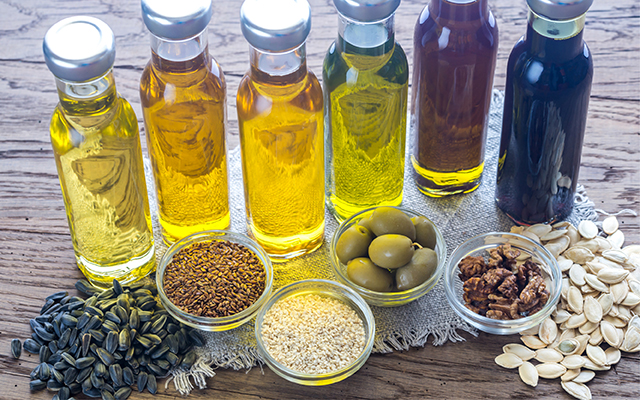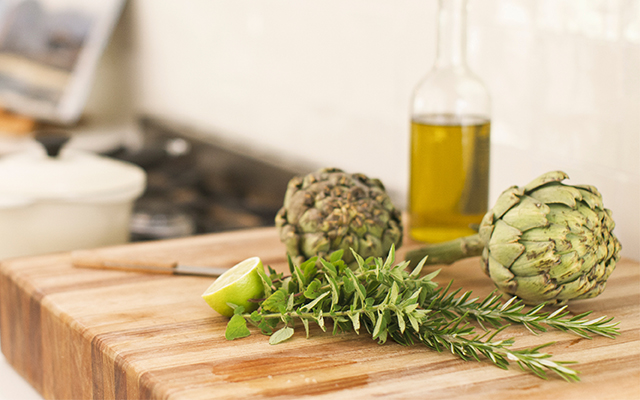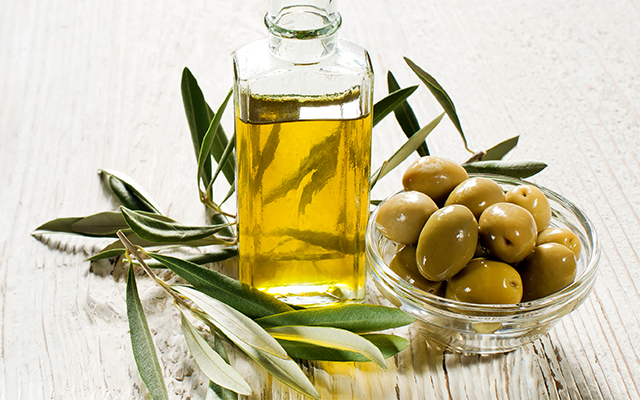“Butter or margarine?” That once-ubiquitous catchphrase represents a much simpler time in the world of fats and oils. These days, we know that much of what we were told about early margarines being healthier was just plain wrong. But we now have even more choices to make among a dizzying array of oils, spreads, sprays and fatty-acid supplements – all claiming to be good for us (or at least better than what we’re using now).
“When it comes to the science of dietary fats,” The New York Times food writer Kim Severson recently noted, “what to eat is a moving target.”
That’s true – sort of.
On the one hand, much of the actual science on fats has been well established for decades. But relatively little of that scientific information has been broadcast to the public sector in the form of good dietary advice. Instead, most of us have gotten a variety of mixed (and often industry-tainted) messages that have left us utterly confused and unsure about what to believe.
In the last several decades, many Americans, taking advice from organizations like the USDA and the American Heart Association (AHA), have been striving to eliminate fats – all fats – from their diet. Yet, recent studies have shown that low-fat or no-fat diets not only don’t help us lose weight, they also don’t do much to reduce our risk of heart disease and certain types of cancer. Eliminating too many fats from our diet can also encourage us to overeat other foods, particularly refined carbs, that cause us to gain weight and increase our risks of disease.
It’s worth noting that coronary heart disease was relatively rare in this country in the early 20th century, even though we ate more saturated fats – think beef suet and butter – than we do now. Of course, many factors, including reduced activity and an increased intake of processed foods, have also influenced the increase in heart disease since then. But many health experts, including fats-researcher Mary Enig, PhD, author of Know Your Fats: The Complete Primer for Understanding the Nutrition of Fats, Oils, and Cholesterol, have long asserted that our health downturn is first and foremost attributable to our increased consumption of trans-fatty acids.
The USDA and AHA remained surprisingly quiet about trans-fat dangers for decades. In fact, back in the days of the “butter-or-margarine” question (the days when most margarines were full of trans fats), both organizations tended to suggest margarine as the better option. And as for the value of healthy fats, neither organization has been particularly vocal.
So it’s no wonder we’re confused. The key question on most consumers’ minds these days remains: Which fats and oils are beneficial to our health and well-being – and which are not?
Fortunately, there are some reliable answers to that question. As Marion Nestle, PhD, MPH, professor of nutrition, food studies and public health at New York University, writes in her book What to Eat: An Aisle-by-Aisle Guide to Savvy Food Choices and Good Eating, “Fats, even more than carbohydrates, come in categories – they can be good, bad or neutral for health.”
So Many Squeaky Wheels
More than ever before, leading nutrition experts are encouraging people to include an ample supply of healthy fats in their diets, noting the critical roles these “good” fats play throughout our bodies – and our brains, which are largely composed of fatty acids.
“Until the middle of the 20th century, fats were thought to play one main role in the body, that of providing fuel for cells,” writes Walter Willett, MD, PhD, author and professor of epidemiology and nutrition at the Harvard School of Public Health, in Eat, Drink, and Be Healthy: The Harvard Medical School Guide to Healthy Eating. “We now know that they have many other important jobs. Fats provide the raw materials for building cell membranes … [which] control what gets in and what gets out. They make up the sheaths that surround and protect nerves. They are the raw materials from which some hormones are made, as well as other chemicals that control blood clotting and muscle contraction.”
“Fats provide the raw materials for building cell membranes … [which] control what gets in and what gets out. They make up the sheaths that surround and protect nerves.”
Including an adequate amount of dietary fat also helps moderate the blood-sugar impact (or “glycemic load”) of the foods we eat. This is important because keeping blood-sugar levels stable is now recognized as an important factor in minimizing our risks for obesity, inflammation, diabetes and heart disease.
All of which makes one wonder why the good news about fats has been a secret for so long. Many nutritional experts, including Udo Erasmus, PhD, author of Fats that Heal, Fats that Kill, believe that the message on fats has been muffled by business interests. “The government standards have really been more industry-friendly than health-driven,” Erasmus says. “If health and fitness are what we want, we have to set higher-than-minimum standards. We have to emulate nature’s standards, which industry and government don’t tend to do.” (For more on the fats debate, including a brief description of the “lipid hypothesis” that started much of it, read “Big Fat Controversy” and “Cholesterol Myths”.)
Of course, the news that some fats and oils are beneficial to our health is not a mandate for us to start guzzling them by the glass (most nutritional experts still suggest keeping our intake of fats to about 30 percent of our caloric intake). But it is a call to take a step back and investigate the properties and promises of various dietary fats – and to better understand the roles they play in supporting or undermining our well-being.
The Skinny on Trans Fats
Although there is much debate over which fats and oils are best for our health, there is little debate over which are worst: trans fats (or trans-fatty acids). Most experts agree they are dangerous in any quantity and suggest that we strive to eliminate them from our diets as quickly as possible.
Found in a wide variety of processed and packaged foods like crackers, cookies, energy bars, frozen meals and fast-food products, trans fats are produced by hydrogenating or partially hydrogenating plant oils. The process, which involves heating liquid plant oils in the presence of hydrogen and metal catalysts, changes the molecular structure of the oils in ways that allow them to remain solid (like butter or lard) at room temperature. This gives products containing trans fats a creamy texture, reduces cost and extends shelf life, but creates a wide range of adverse health effects. Among other problems, trans fats interfere with normal metabolism, disrupt hormone function and block the action of healthy omega-3 fats.
Like animal-derived saturated fats, trans fats raise our levels of LDL cholesterol, which contributes to heart disease. But trans fats also lower our levels of the protective HDL cholesterol and have been shown to create free radicals, which have been linked to cancer. They also contribute to obesity, promote clotting and damage cell membranes. Additionally, notes Willett, they contribute to a host of chronic diseases: “The latest research indicates that trans fats also fire inflammation, an overactivity of the immune system that plays key roles in the development of heart disease, diabetes, and probably other leading causes of death and disability.”
Starting last year, the FDA began requiring food manufacturers to list the amounts of trans fats on their nutrition labels. Seeing the writing on the wall, several fast-food giants have already made the switch to non-trans-fat oils, and in December 2006, New York became the first U.S. city to ban trans fats from all its restaurants.
One unfortunate limitation of the FDA food-labeling regulations, Willett cautions, is that “a product is allowed to proclaim itself as ‘trans-fatty-acid-free’ if it contains less than one-half gram of trans fat per serving.”
To be totally certain that a product is free of trans fats, Willett recommends reading the ingredients list: If it says “hydrogenated,” “partially hydrogenated” or “vegetable shortening” anywhere on the label, put it back on the shelf.
Back to Balance
OK, so we know we’re not supposed to eat trans fats, but what should we be eating?
Food expert Nina Planck, author of Real Food: What to Eat and Why and former director of New York City’s open air Greenmarket, says it’s a matter of embracing the traditional and avoiding the industrial: “All the traditional fats – ideally unrefined – are healthy in moderation,” she writes.
Conversely, she notes, industrial fats (those mass produced with heat and chemicals or otherwise adulterated in laboratories) pose real health dangers. These, Planck asserts “you must avoid like the proverbial Black Death.”
In the category of traditional fats, Planck references virtually all naturally occurring and minimally processed fats that have been in our diet for generations, including animal fats, monounsaturated fats like extra-virgin olive oil, polyunsaturated fats like flaxseed and walnut oils, and even saturated fats like butter and coconut oil (the latter of which is rich in healthy medium-chain fatty acids).
In the category of industrial fats, she includes not only trans fats, but also highly refined “supermarket” vegetable oils (including corn, safflower and soybean oils) that have been added to our diets relatively recently.
You might be surprised to hear that these seemingly benign polyunsaturated vegetable oils are on Planck’s hit list, but as she explains it, “Industrial vegetable oils are unhealthy because they are too rich in omega-6 fats and because they are typically refined with heat, which makes them rancid and carcinogenic.”
It might seem counterintuitive to avoid oil that is rich in omega-6 fats. After all, the primary omega-6 fat found in vegetable oils, linoleic acid, is an essential fatty acid. The real problem, Planck says, is a matter of ratio. Americans eat way too many of most omega-6 fats overall, and not enough omega-3 fats to balance them out.
Rather than the ideal 1 to 1 balance present in the varied diets of our ancient ancestors, the ratio of omega-6 fats to omega-3 fats in corn oil, for example, is 60 to 1; in safflower oil, it’s 77 to 1. It’s not hard to see how eating such oils in large quantities could significantly imbalance the fatty-acid levels in our bodies. (One exception to the omega-6 excess rule is the omega-6 fat gamma linolenic acid, or GLA – found in the oils of black currant, borage, evening primrose and Siberian pine nut. GLA acts more like a healing omega-3 fatty acid in the body.)
In addition to warning of the excess omega-6 fats found in vegetable oils, Planck is also leery of the refining process these oils usually undergo. “When our ancestors ate grains and omega-6 fats, they came from whole foods….Native Americans rarely, if ever, ate pure corn oil. They ate the whole corn kernel: bran, carbohydrate, oil and all. Corn was ground slowly between stones, leaving its unsaturated fats and antioxidant vitamin E intact,” she explains. “Industrial vegetable-oil processing, by contrast, removes flavor and nutrients. Grain, beans and seeds are crushed under high heat and extracted with chemical solvents like hexane, which is then boiled off. They may be bleached, refined and deodorized. All this damages the polyunsaturated fats, destroys vitamin E and creates free radicals.”
Mark Hyman, MD, editor-in-chief of Alternative Therapies in Health and Medicine and author of UltraMetabolism: The Simple Plan for Automatic Weight Loss, agrees that, ideally, the oils we eat should be as close as possible to their natural state. “Oils should be organic, cold-pressed and expeller-pressed, so that they’re not chemically altered in any way,” he says. “A lot of times, the refining process uses techniques that cause hydrogenation of the oils and chemically change their structure.” The result, he notes, not only contributes to general toxicity and ill health, but also to metabolic disruptions and unwanted weight gain.
While Hyman agrees with Planck that the naturally occurring saturated fats from meats and dairy aren’t bad in moderation, he points out that “most Americans already eat an excess of such fats.” He instead recommends emphasizing natural, minimally processed plant-based and fish oils, which tend to be best for both our bodies and our brains.
Culinary Distinctions
Even otherwise healthy oils can become unhealthy if overheated. Some stand up well at high temperatures, others don’t. Most nutritional experts recommend not taking any oil beyond its “smoking point” – the point at which it literally begins smoking, forming carcinogens and free radicals in the process.
Here’s where things get a little tricky. As a rule, while less-refined oils are better for you and have richer flavor, refined oils tend to have higher smoking points. So ultimately, the key is finding the right oil for the job. (See Resources, below, for more info.)
Generally, the lower heat you use, the more healthy options you have. Extra-virgin olive oil is a great all-purpose cooking oil, appropriate for most medium-heat sautéing and stir-frying. For roasting, baking and sautéing at medium-high heats, you can use a variety of refined nut and seed oils (be sure to inform any dinner guests if you use peanut oil, since peanut allergies can be fatal), or you can use saturated fats (like butter or coconut oil), which tend to be more stable at higher temperatures. Check labels for smoking-points and usage suggestions for all oils before you add them to the pan.
For frying (which is best avoided for a variety of health reasons), only refined oils have a high enough smoking point. And some healthy polyunsaturated oils, like flaxseed and fish oils, which are high in omega-3 fatty acids, should never be used for cooking at any temperature. They have very low smoking points and are nutritionally compromised when heated. (Remember, too: The less saturated the oil, the more care you should take to package it in dark glass and keep it away from heat and light, both of which can cause the oil to oxidize and become rancid more quickly.)
“Omega-3 fats are very fragile,” says Liz Applegate, PhD, senior lecturer in nutrition and director of sports nutrition at the University of California, Davis. “There’s evidence that when you high-heat cook omega-3 fats like flaxseed oil, for example, you may form free radicals that, down the road, have the potential to be carcinogenic.”
Instead, Applegate suggests tossing these types of oils into vinaigrettes or adding them to cooked dishes once they’ve been taken off the heat – drizzling them over salad or veggies, for example.
The Canola Conundrum
One interesting note in the oils war is the controversy surrounding canola oil, an oil bred and cultivated by two Canadians in the 1970s from the rapeseed plant. A monounsaturated oil that contains an impressive 2 to 1 ratio of omega-6 to omega-3 fatty acids, canola has been lauded as heart-healthy and embraced by Americans for everything from stir-frying to baking.
Many experts, including Willett and Applegate, see nothing wrong with canola oil. Yet others, including Planck and Erasmus, are wary about its use.
“For obvious reasons, there are no long-term studies: Canola oil is a relatively new food,” Planck writes in Real Food. “However, animal studies have linked canola oil with reduced platelet count, shorter life span and greater need for vitamin E. The United States and Canada do not permit canola oil to be used in infant formula because it retards growth in animals.”
Applegate dismisses the controversy surrounding canola oil as overblown. Canola oil is “very healthy and has been shown to have cholesterol-lowering benefits,” she says.
Hyman thinks the problems with canola may be overstated, but he’d prefer to see people using olive oil: “My philosophy is eating whole, real foods and not stuff that’s invented or processed by man. We should eat foods we’re natively adapted to. Canola oil is an unusual new fat, and while I don’t think it may be as bad as people say, I also don’t think it should be the predominant source of oil in our diet. There are better options out there.”
Natural Selection
The point is, no matter how you feel about canola – or any other oil or fat – you now have an opportunity to make an informed personal choice. Most of us could stand to replace many of the fats in our current diet with healthier alternatives.
So open your kitchen to a variety of healthy oils. And open your mind to the notion that certain fats, far from being a dietary enemy, may just be your body’s best friend.




This Post Has 0 Comments